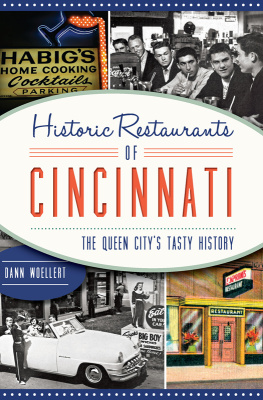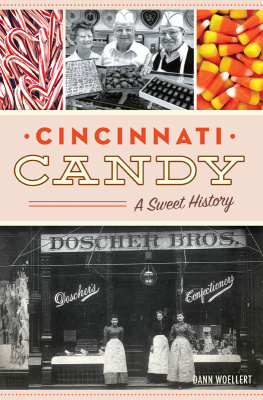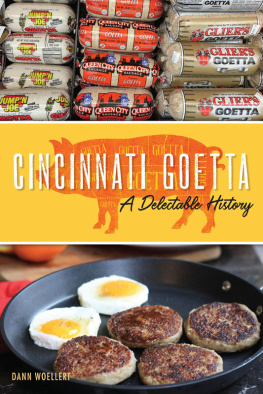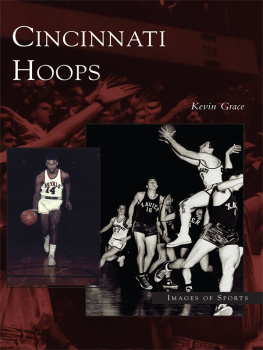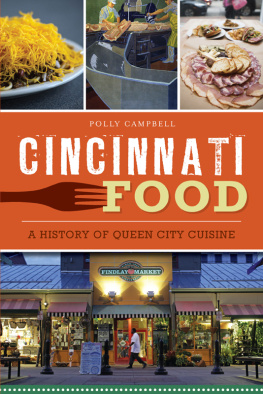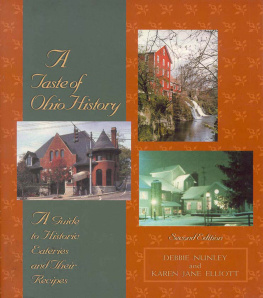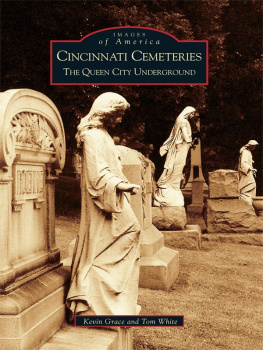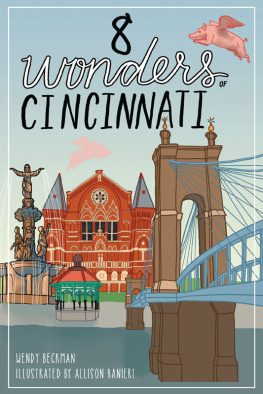


Published by American Palate
A Division of The History Press
Charleston, SC 29403
www.historypress.net
Copyright 2015 by Dann Woellert
All rights reserved
Front cover images, from left to right, top to bottom: Habigs Restaurant sign, West Pharmacy Soda Fountain, Frischs Drive-In and Capronis Restaurant.
First published 2015
e-book edition 2015
ISBN: 978.1.62585.539.8
Library of Congress Control Number: 2015943186
print edition ISBN 978.1.46711.764.7
Notice: The information in this book is true and complete to the best of our knowledge. It is offered without guarantee on the part of the author or The History Press. The author and The History Press disclaim all liability in connection with the use of this book.
All rights reserved. No part of this book may be reproduced or transmitted in any form whatsoever without prior written permission from the publisher except in the case of brief quotations embodied in critical articles and reviews.
To my mother, Flora, whose wonderful home cooking inspired me to become the foodie that I am.
PREFACE
Cincinnati is one of those weird food cities. Our mishmash of immigrant groups has invented food dishes and consumer food brands that can be found nowhere else in the country. Foods like our chili, goetta and mock turtle soup were invented here and stay here. Skyline Chili found that out when it tried to expand its franchising out of the Tristate area without success. We elevate these foods to pop status and celebrate them at family restaurants, churches and commercial food festivals throughout the year. Are we in Cincinnati a city more receptive to new food ideas than other areas of the country? Or are we just frugal and flexible? Sure, weve been victims of mega food trends throughout the decades like smorgasbords and fondue. But we also seem to have a level of food genius that lets our culinary minds create new and innovative foods.
There are many restaurants that have come and gone in Greater Cincinnati over the years, and theres no way to touch on every single one of them in one book. Ive tried to pay homage to those classic Cincinnati restaurants that have been around the longest, have reached landmark status or had a major impact on dining culture in Cincinnati.
We have many restaurants in Cincinnati that have been around more than fifty years and are going strong. We even have four still-operating restaurants that are more than one hundred years old! A few of our classics are even reportedly haunted. The recession and new food trends have recently put several classics out of business, however. So enjoy and reminisce about your Cincinnati food experiences as I take you back to and through some of Cincinnatis classic restaurants.
Id like to thank the following for their help: Pat Gramglia of the Pasquale Pizza family; Pete Buscani, executive vice-president of LaRosas; John Frank of Frank Tea & Spice Company; Billy Lambrinides of the Skyline Chili family; the Daoud family of Gold Star and Charlie Howard, VP of marketing for Gold Star; Dan Glier of Gliers Goetta; Gaynell Sizemore of Empire Chili; Bill Kahn of the Chili Bowl; Karen Haggis of the Haggis and Manoff chili families; the wonderful folks at the history and genealogy department of the Main Cincinnati Public Library; Valda Moore at Price Hill Historical Society; the University of Cincinnati Library; my commissioning editor, Krista Slavicek; and my parents, Roger and Flora.
Chapter 1
EARLY CINCINNATI FOOD
Cincinnati is a receptive and fertile ground for creating new food categories that exist nowhere else in the world. While the citys patina is most certainly Germanic, there are a number of other ethnicities that have made their marks on its culinary history. The Macedonians influenced what is arguably the most popular regional item: Cincinnati-style chili. The Jewish faithful have had immense influence on the local food. The heavy Catholic influence in the area has made Lenten fish dishes popular year-round. And the few Italian communities have made their marks and given us their perspectives on comfort food.
There are food wars still raging that split householdsbrother against mother, father against daughter. When it comes to the chili trenches, you are either with Skyline or Gold Staror your local neighborhood chili parlor. On the ice cream front, you are either on the side of Graeters or Aglamesis. And you either eat your goetta crispy or non-crispy. Finally, the pumpkin pie wars are split almost equally between Buskens and Frischs.
Food is also heavily influenced by the Eastside/Westside divide. The Westside of Cincinnati can be loosely defined as the area west of Interstate 75 and the area south of the Western Hills Viaduct to the western city limits. This area is very German Catholic, and many families stay within the neighborhoods of their original parishes for three or more generations. The Eastside is loosely defined as the area south of the Norwood Lateral and east of Interstate 71 to the eastern city limits. Eastsiders are more transient than Westsiders. Until only a few years ago, you could not find a Thai restaurant in Cincinnatis Westside, and until recently, dishes like hanky panky, goetta and fish logs could not be found in the Eastside. Now even the hipster Rookwood Pottery in Mount Adams on the Eastside serves goetta hanky panky, a fusion of two traditionally Westside Germanic dishes.
Cincinnatis first tavern and eatery, the Square and Compass Tavern Inn, was owned and operated by an early pioneer named Griffin Yeatman, who had arrived in 1793. It overlooked the public landing, which would later be named Yeatmans Cove after him. The name of the tavern is a reference to the symbol of the Masonic order to which he belonged. The tavern became a hub for the community, being the site of the post office, the site of the first territorial legislature and Supreme Court and the site of many Masonic banquets. His establishment was patronized by the likes of the Marquis de Lafayette, Andrew Jackson, Aaron Burr, William Henry Harrison, Mad Anthony Wayne and George Rogers Clark.

Griffin Yeatman, Cincinnatis first tavern owner, and the ad he placed to promote his opening. Courtesy of the Public Library of Cincinnati and Hamilton County.
As the city began to grow out of a fort and early pioneer settlement, early taverns like the Blue Goose and the Hotel of the Golden Lamb in Cumminsville were feeding the hungry Irish and German canal workers in the 1820s. You might see a passenger pigeon potpie or stuffed gamehen, froglegs or turtle soup on the menu. By 1819, there were seventeen taverns in Cincinnati, with accommodations being hard to secure with the high volumes of travelers coming to the Queen City. In 1817, John Palmer, a traveler to Cincinnati, wrote about the tavern food, Five dollars per week is the price of the best hotel in Cincinnati. We paid $3 per week, had a room to ourselves and our living was excellent: at breakfast plenty of beef steak, bacon and eggs, white bread, Johnny cakes [of cornmeal], butter, tea and coffee. Dinnertwo or three dishes of fowl, roast meats, kidney beans, peas, new potatoes, preserves, cherry pie, etc. Suppernearly the same as breakfast.
Next page
